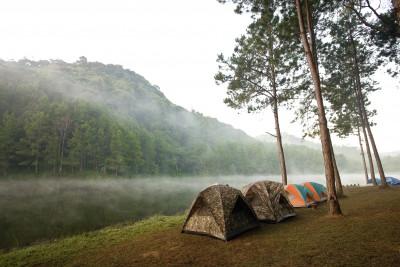
Additional WVU testing confirms acceptable levels of total trihalomethane in drinking water in Southwestern Pennsylvania
MORGANTOWN, W.Va. - Additional testing by the West Virginia Water Research Institute (WVWRI) shows acceptable levels of total trihalomethane (THM) in drinking water at Beth Center Elementary and High Schools in Washington County, Pennsylvania. Those and nine other locations throughout Washington and Greene counties were sampled in February with similar results.
Last November, WVWRI tested samples collected at Beth Center Elementary and Beth Center High School that showed high THM levels.
Total THMs are regulated in drinking water supplied by water authorities. They form when water is chlorinated to control microbial pathogens. Chlorine reacts with methane in the water which allows the halogens-chloride and bromide to attach and form THM. There are four THMs with varying amounts of chloride and bromide.
The Federal Safe Drinking Water Act regulates the amount of total THM delivered to customers to 80 micrograms/liter when averaged over a year. Pennsylvania regulations require sampling for THM every three months and compliance is based on the average of the four most recent quarterly samples. So, while the November readings were reason for concern, further sampling was needed to determine whether an immediate threat existed.
The WVWRI, with support from the Colcom Foundation, conducted a one-month long effort to determine THM levels in five water systems along the Monongahela River from Brownsville, Pennsylvania to the West Virginia state line. Included were: Pennsylvania American Water at Brownsville, Charleroi, Tri-County, Southwestern Pa. and East Dunkard Water Authorities.
Dr. Paul Ziemkiewicz, director of the WVWRI at West Virginia University said four weekly samples were taken in February 2016 in the Monongahela River upstream of the water system intakes and at 11 locations throughout the distribution networks including the Beth Center Elementary and High Schools, where last November’s high readings were found. Both schools are served by the Southwestern Pennsylvania Water Authority, which according to state records is in compliance with total THM standards. Flow in the Monongahela River during that period ranged from about 5,000 to 37,000 cfs, averaging a little over 20,000 cfs.
Ziemkiewicz commented that the flow was “high but not unusual for winter on the Mon.”
“There’s always a concern that pollutants are concentrated during low flows and diluted during high flows, and during the November 2015 sampling flow was 2,400 cfs. Serious low flow on the upper Mon is below 1,000 cfs.”
Ziemkiewicz pointed out that the February sampling results did not find any total THM exceedances.
“We were concerned that the high November readings at the Beth Center schools might indicate a trend of increasing THM and we had a couple readings [taken in the Tri-County Water Authority system] in the 70 microgram/liter range in February but none in excess of the 80 microgram limit,” said Ziemkiewicz. “This suggests seasonal exceedances but when averaged out over the year would indicate compliance with water quality standards.”
“That is consistent with PADEP’s findings for the Southwestern Pa. Water Authority which services the Beth Center schools. November’s high total THM levels coincided with late summer/autumn low flows, when water treatment systems are likely to use higher rates of chlorination.”
-WVWRI-
Contact: Paul Ziemkiewicz, Ph.D., Director, West Virginia Water Research Institute
304.293.6958, [email protected]
as/3/22/16
Updated: 3/31/16

